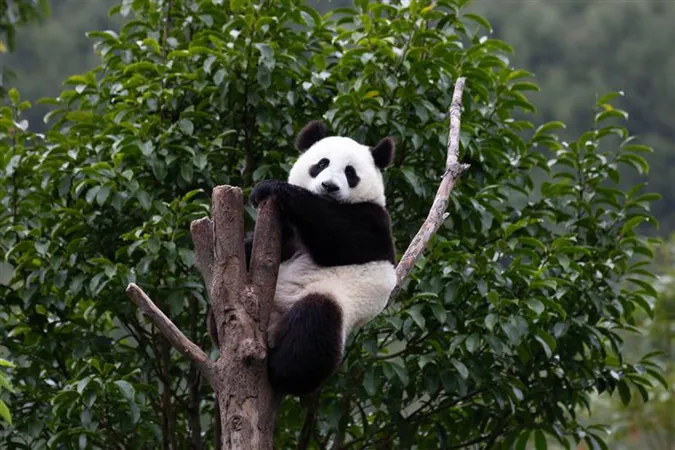
Shocking Ancient Panda Discovery: Evidence of Meat-Eating Ancestors Found in Europe!
2024-09-21
Introduction
A groundbreaking discovery in southern Germany has sent shockwaves through the scientific community! Fossils uncovered from an ancient panda species, Kretzoiarctos beatrix, challenge the long-held beliefs about the dietary habits of these magnificent bears. Contrary to the modern giant pandas known for their bamboo-centric diet, researchers have determined that their ancestors were actually omnivorous, thriving on a diverse menu of both plants and meat.
Discovery and Research Team
The findings stem from an international research team hailing from Hamburg, Frankfurt, Madrid, and Valencia, who examined the fossilized remains of K. beatrix at the Hammerschmiede site in Allgäu, Germany. Dating back approximately 11 million years, K. beatrix is now recognized as the oldest known ancestor of modern pandas. Unlike their larger descendants, which can weigh up to 220 pounds, these ancient pandas were slightly smaller yet still robust, showcasing unique evolutionary traits.
Historical Significance
Most of the previously discovered fossils of K. beatrix have been located in Spain, leading scientists to hypothesize that pandas may have originally thrived in Europe before migrating toward Asia. This fascinating insight into their history is underscored by the team’s comparative analysis of the fossilized teeth of K. beatrix with those of various bear species, such as polar bears, brown bears, and modern giant pandas.
Dietary Insights
The analysis revealed that K. beatrix had not adapted to a diet solely focused on tough plant materials, as modern pandas have. Instead, they exhibited characteristics more akin to present-day brown bears, which consume a mix of flora and fauna. “These findings are crucial for understanding the evolutionary trajectory of bears and the development of herbivory in giant pandas,” stated Professor Madelaine Böhme from the Senckenberg Centre for Human Evolution and Palaeoenvironment at the University of Tübingen. “Kretzoiarctos beatrix showcases a generalist diet—a trait that has changed dramatically through evolution.”
Research Methodology
Notably, the researchers employed a meticulous approach of macro- and micromorphological analysis of the bear’s teeth, discovering scratches that imply a varied diet including harder materials like bones. Their results, published in two separate studies, reference the dietary habits of 28 predator species uncovered during their extensive research at Hammerschmiede.
Ecological Context
The Hammerschmiede site has become notorious in recent years; it gained fame in 2019 when the remains of a remarkable great ape, Danuvius guggenmosi, were found—deemed to be among the first species to adapt to upright walking. Recent excavations revealed an astounding variety of 166 fossilized species, confirming the area was once home to a flourishing ecosystem.
Conclusion
This discovery does not just transform our understanding of ancient pandas; it invites us to reconsider the evolutionary paths of many species and their adaptations. As scientists continue to shine a spotlight on our planet's prehistoric inhabitants, who knows what other astonishing revelations await in the fossil records? Don’t miss out on the evolving story of Earth's dynamic history!


 Brasil (PT)
Brasil (PT)
 Canada (EN)
Canada (EN)
 Chile (ES)
Chile (ES)
 España (ES)
España (ES)
 France (FR)
France (FR)
 Hong Kong (EN)
Hong Kong (EN)
 Italia (IT)
Italia (IT)
 日本 (JA)
日本 (JA)
 Magyarország (HU)
Magyarország (HU)
 Norge (NO)
Norge (NO)
 Polska (PL)
Polska (PL)
 Schweiz (DE)
Schweiz (DE)
 Singapore (EN)
Singapore (EN)
 Sverige (SV)
Sverige (SV)
 Suomi (FI)
Suomi (FI)
 Türkiye (TR)
Türkiye (TR)